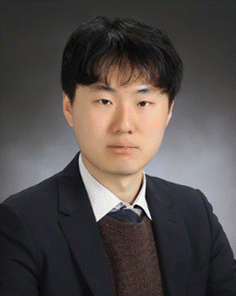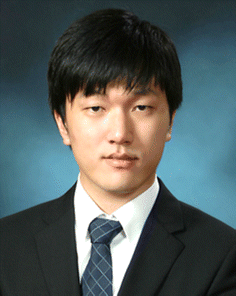Nanoscale Horizons Emerging Investigator Series: Dr Sukjoon Hong and Dr Joonmyung Choi, Hanyang University, South Korea
Abstract
Our Emerging Investigator Series features exceptional work by early-career nanoscience and nanotechnology researchers. Read Sukjoon Hong and Joonmyung Choi’s Emerging Investigator Series article ‘Molecular mechanics of Ag nanowire transfer processes subjected to contact loading by a PDMS substrate’ (https://doi.org/10.1039/D2NH00212D) and read more about them in the interview below.
Dr Sukjoon Hong received a BS and a MS degree from the Department of Physics at Seoul National University, and a PhD in Mechanical Engineering from the Korea Advanced Institute of Science and Technology (KAIST) in 2014. After postdoctoral studies at UC Berkeley in 2015, he joined the faculty of the Department of Mechanical Engineering at Hanyang University, ERICA Campus, in South Korea as an assistant professor in 2016. He serves as an Associate Professor at the same department while also participating in a number of internal educational and research programs including BK21 FOUR ERICA-ACE Center, HYU-KITECH and HY-IEET. His research interests emphasize the development of various processing techniques, especially for nanomaterials using optical methods, and some specific topics of current interest include selective laser sintering/ablation of nanoparticles, laser nanowelding/transfer of nanowires, and laser pyrolysis of polymeric substrates for transformative generation of carbon-based nanomaterials. His research has also spanned a variety of applications such as flexible/stretchable electronics, dynamic optical elements and soft robotics. Dr Sukjoon Hong has published more than 100 peer-reviewed scientific journal papers, and his work has been recognized with numerous awards including the Young Engineer Award from KSPE.
Dr Joonmyung Choi is an assistant professor at Hanyang University, Ansan, South Korea. He received his BS degree (2010) and PhD (2016) from Seoul National University. In the undergraduate course at Seoul National University, he was awarded cum laude with early graduation, and was awarded the outstanding PhD thesis award through his doctoral thesis. Prior to his current position, he served as a postdoctoral researcher at Seoul National University (2016–2017) and a senior researcher at Samsung Electronics (2017–2019). From 2020 to the present, he has served as the editorial director of the CAE and Applied Mechanics Division of the Korean Society of Mechanical Engineers. Since 2022, he has also served as the associate editor of Transactions of the Korean Society of Mechanical Engineers A. His research interests are in the field of structural mechanics, surface and interface characterization, and multiscale modeling. Since 2011 he has published a total of 58 international journal articles in academic fields including polymer physics, composites mechanics, surface and interfacial mechanics, and nanotechnology. Currently, he is conducting multiscale modeling and molecular-scale dynamics simulation research for projects funded by the National Research Foundation of Korea and the Ministry of Trade, Industry and Energy. In addition, since 2019, he has been leading industry–university cooperation projects with funding from Samsung Electronics Advanced Institute of Technology.
Read Sukjoon Hong and Joonmyung Choi’s Emerging Investigator Series article ‘Molecular mechanics of Ag nanowire transfer processes subjected to contact loading by a PDMS substrate’ ( https://doi.org/10.1039/D2NH00212D ) and read more about them in the interview below:
NH: Your recent Nanoscale Horizons Communication describes the molecular mechanics of the laser-induced transfer process of a penta-twinned silver nanowire placed on a polydimethylsiloxane (PDMS) donor substrate via all-atom molecular dynamics simulations and experimental validation. How has your research evolved from your first article to this most recent article and where do you see your research going in future?
SH: The very start of my research on nanowires dates back to 2012 when I was pursuing my PhD. Among various functional nanowires, silver nanowires (Ag NWs) gained special attention at that time, particularly in the form of a percolation network composed of innumerable, randomly oriented Ag NWs, due to the upsurge of portable devices such as smart phones and tablet PCs that require transparent conductors for touch screens. My first article on Ag NWs was published in 2015, relating to the demonstration of a stretchable and transparent heater realized by an analogous Ag NW percolation network. This work highlighted that a highly stable Ag NW percolation network can be achieved over a large area on a versatile substrate using a facile wet processing technique.
The positioning of a single nanowire, on the other hand, is a vastly different story. In order to create a nanowire-based ultrasmall electronic device such as miniaturized sensors, the chosen nanowire has to be placed precisely at the assigned location. However, manipulation of a single nanowire remains a difficult task even today, especially in dry, non-vacuum environments. In this regard, the recent communication published in Nanoscale Horizons showed, by means of molecular dynamics (MD) simulation, that a Ag NW subjected to contact loading by a PDMS substrate can be successfully transferred to a target substrate. From an experimentalist’s perspective, we expect that this work will provide a basis for development of efficient and facile dry transfer techniques for deterministic positioning of single nanowires. We are currently developing the relevant laser technology toward creating a proof-of-concept nanowire device.
JC: The main interest of my research is to create a multiscale mechanical design method that combines classical molecular dynamics simulation and continuum mechanics. I started publishing research papers a year after starting my Master’s program, focusing on simulating the mechanical properties of polymer composites. Afterwards, while working at Samsung Electronics after completing my PhD, I had the opportunity to look at the mechanics of polymers as well as solid materials such as ceramics and metals in general, using multiscale simulation as a methodology. Recently, I am interested in understanding the overall mechanism of ultra-precision processes such as semiconductors and displays and developing design methods, rather than research limited to material property evaluation. As the precision of the process required by industry comes down to the nanometer level, I believe in earnest that multiscale simulation technology will soon be recognized for its application value in industry.
NH: What aspect of your work are you most excited about at the moment?
SH: Our research group utilizes lasers as the main tool to process a wide range of target materials, and we frequently observe unexpected and exciting results. Some recent discoveries include adhesive-free bonding between two polymeric substrates and a spontaneous exfoliation of porous carbon during the pyrolysis process. These were both found in the course of developing relevant laser processes. It should be noted that these findings have become the basis for new research topics, as was the case of the recent communication in Nanoscale Horizons. At the moment, we are also actively investigating the laser-induced nanoscale patterning of brittle substances, with interesting outcomes.
JC: These days, I am interested in designing and fabricating multiscale structures of a new dimension by structurally intricate weaving of functional fibers. By applying the developed simulation technology to the design of the deformation behavior of complex low-dimensional structures, I would like to create more interesting and novel structural creations that have never been presented before. In particular, the work of diversifying the shape of these multiscale structures is expected to play an important role in energy-environmental issues such as separators, artificial muscles, and energy harvesters.
NH: In your opinion, what are the most important questions to be asked/answered in this field of research?
SH: The concept of a bottom-up approach using nanomaterials to create arbitrary functional devices has been around for a long time, and quite a number of effective techniques have been developed, at least on a laboratory scale. Further scalability, however, still remains an unsolved issue, and we predict that laser processes for nanomaterials including the proposed laser transfer technique for single nanowires will face a similar challenge.
JC: Today, solutions based on physical models and computing resources have become incomparably richer than before. After all, in today’s research based on computer simulations, it is most important to clarify what the proposition to be obtained from the calculation result is. Also, no matter how modern and complex the models used are, it is necessary to admit that simulations partially explain only certain aspects of the natural behavior observed in experiments. Therefore, it is necessary to identify the clear scope and limits of the phenomena that a simulation can handle, and conduct analysis by intensively modeling the propositions to be identified within them. After performing calculations in such a well-controlled environment, I always ask myself, ‘Do these simulation results provide meaningful new insights for both theorists and experimentalists?’.
NH: What do you find most challenging about your research?
SH: Laser processes generally include complex multiphysics problems related to the mechanical, optical, thermal, and chemical properties of the target material, coupled with various feedback and different types of instability. As a result, the analysis of the experimental results is often difficult.
JC: Multiscale mechanical design technology connects physical models constructed in different space–time domains to explain various multiphysics phenomena that cannot be explained by classical mechanics. Ensuring the validity and rigor of this methodology is not easy, as it involves merging models from completely different domains with a scale difference of at least 106 times into a single problem. In addition, since some topics deal with areas that cannot yet be experimentally implemented, a basic evaluation process that can prove the feasibility of the phenomenon is very important.
NH: In which upcoming conferences or events may our readers meet you?
SH: I plan to participate in SPIE Photonics West and MRS meetings on a regular basis.
JC: In fact, I haven’t been abroad for the past two years because of COVID-19, and instead have focused mainly on online academic activities and domestic academic conferences. Before COVID-19, I regularly participated in academic conferences in computational mechanics (WCCM), composite materials (ICCM), and liquid crystals (ILCC). From 2023, I plan to actively participate in these academic conferences again, and plan to expand my activities to the field of functional polymers, soft robots, and computational chemistry.
NH: How do you spend your spare time?
SH: As an amateur musician, I often play piano in my spare time, and also participate as a violinist in an orchestra.
JC: In the past, I had hobbies related to reasoning problems and puzzle making, but after stepping into academia, it became difficult to find regular free time. Instead, whenever I have time these days, I often watch YouTube channels dealing with world history, basic science, architectural design, and space.
NH: Can you share one piece of career-related advice or wisdom with other early career scientists?
SH: The importance of close collaboration between research groups and networks across all academic fields is continuously increasing for high-impact research, yet I believe the first priority toward effective and meaningful collaboration is to build your own speciality.
JC: Knowing that I am also an early-career scholar who still has a lot to learn, this is a question I am cautious about answering. Nevertheless, if there is a lesson learned so far, it is that good opportunities come to anyone in everything, including research, but only those who are prepared and are allowed to seize those opportunities. You may be going through a tough process right now, like a race with no end in sight, but I want to tell you not to give up and always do your best. One day, when the opportunity arises, your efforts so far will be rewarded with even greater rewards.
| This journal is © The Royal Society of Chemistry 2023 |


